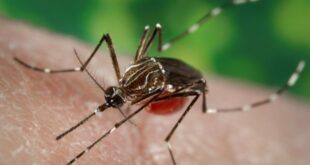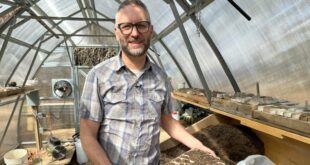UWindsor program prof values international PhD students’ perspectives.

Nelsy Nino says she’s always found it amazing how birds communicate through sound.
So much so that the Colombian biologist moved to Canada to study birds in the country’s southernmost region.
“You can close your eyes, but you can’t close your ears,” said the University of Windsor international PhD student in the faculty of science.
“A lot of people love birds for how colourful they are — like their plumage, their displays, their behaviour — but vocal behaviour is just so amazing.”

Nino says of particular interest is how some songbirds imitate other songbirds.
“We have the northern mockingbird which is a really good imitator, so they imitate like northern cardinals do of the tufted titmouse,” she said.
“In the tropics we don’t know much about mimicry.”
And it’s her Colombian roots that allow her ears to catch different sounds than a typical Canadian, she says.

Colombian researcher bridges gap in songbird research for Canada’s southernmost area
Nelsy Nino says she’s always found it amazing how birds communicate through sound. The Colombian biologist moved to Canada to study birds in the country’s southernmost region while at the University of Windsor. Her professor says she’s identified a distinct female mimicry.
“I’m from the tropics, so when you enter a forest you see a few species, but you hear a bunch of them. There’s a lot of information that you’re taking out for that vocal and acoustic channel.”
According to Nino, her home country has one of the highest avian diversity populations and endemic birds you can’t find anywhere else which has helped with her transition to Canada to study.
“Particular groups interest me a lot for their vocal behaviour.”

Dan Mennill from the University of Windsor says Nino grew up listening to the soundscape of birds in Colombian forests, giving her an expertise that’s invaluable to the program he oversees.
The professor and associate dean of science says Nino has innovated a PhD project focused on a group of birds called seedeaters that shows both males and females mimic sounds of other birds in their temperate zone environment.
Mockingbirds do the same kind of thing, says Mennill, but that Nino’s found female mimicry in this case too — unearthing more questions.
“What are the differences between male and female mimicry? How important are the mimic sounds of males to a female who’s making a mate choice decision?”
“She really has enriched the research within our lab in a way we couldn’t have done without her international expertise.”
International students foster diverse research, says prof
Mennill says international students play a vital role in post-secondary education across Canada — especially when it comes to the various roles science can play.
“We have got an incomplete picture of the world, because most of the world’s universities are in the temperate zone. But most of Earth’s biodiversity is located near the equator at the tropics. That’s where you have these super biodiverse rainforests.”

International students foster diverse research, says prof
Dan Mennill from the University of Windsor says international PhD student Nelsy Nino grew up listening to the soundscape of birds in Colombian forests. He says that gives her an expertise that’s invaluable to the program he oversees.
According to Mennill, scientists can’t just be parachuted into the tropics from temperate zones to bring data back to universities such as UWindsor.
“We do much stronger science if we work with local people to help understand those local animals.”
Mennill says it’s important to have diverse universities and to create pathways for people from across the globe to afford and attend Canadian schools.
He says universities only populated by Canadian students would eliminate some of the most important questions in science and academia being asked.
“The brain gain is that we gain all of these great minds working from perspectives that are global to address problems here … that are much broader than we could if we only came with our own perspective, and the field of science would really be diminished if we only had a restricted set of minds working on the most important problems.”
ABOUT THE AUTHOR

Journalist
Bob Becken is with CBC’s digital team. Previously, he was an executive producer with CBC Windsor, and held broadcast and digital news director duties with Bell Media and Blackburn Media. You can reach him at bob.becken@cbc.ca.
*****
Credit belongs to : www.cbc.ca
 Atin Ito First Filipino Community Newspaper in Ontario
Atin Ito First Filipino Community Newspaper in Ontario






